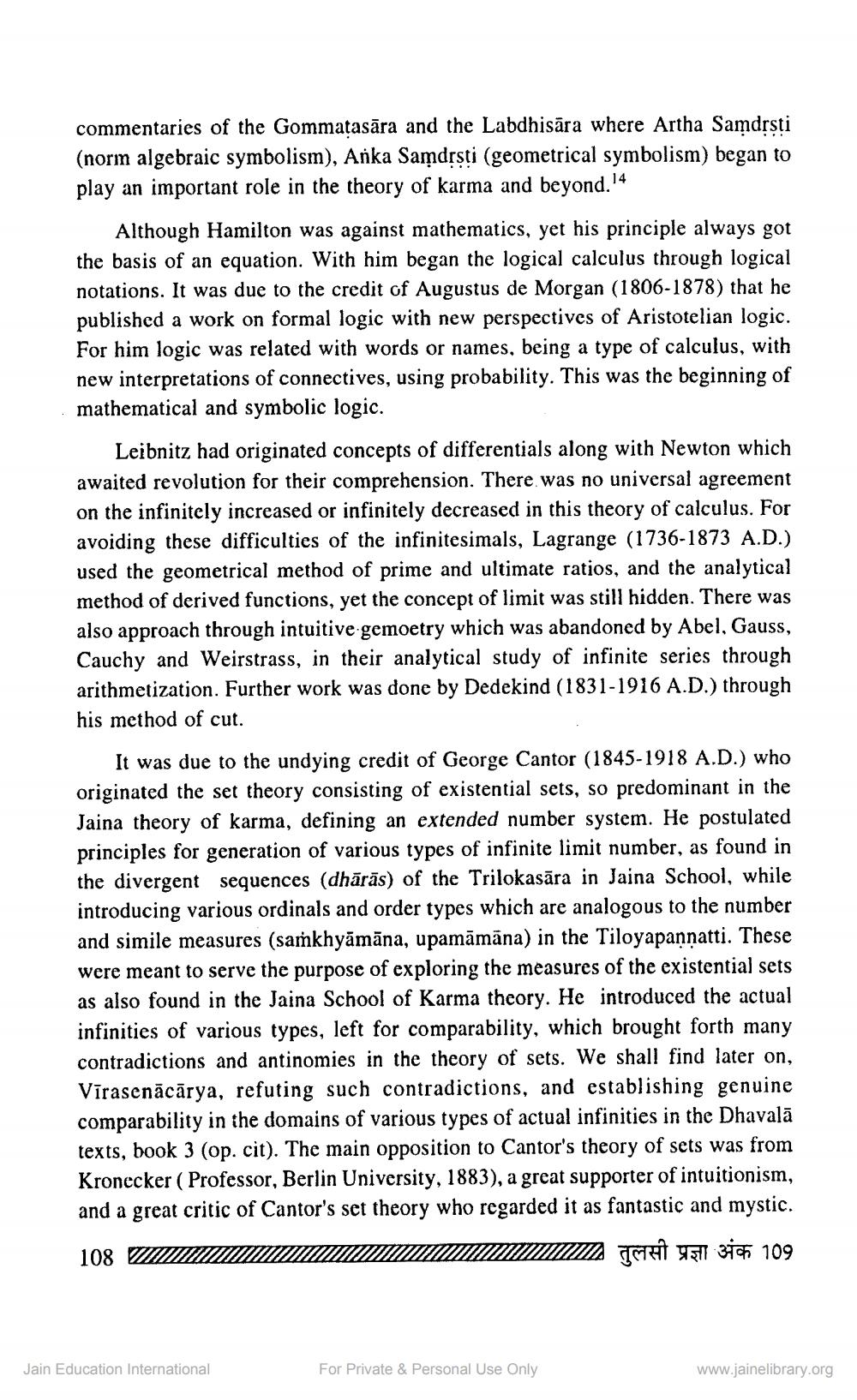________________
commentaries of the Gommatasāra and the Labdhisāra where Artha Samdrsti (norm algebraic symbolism), Arka Samdrsti (geometrical symbolism) began to play an important role in the theory of karma and beyond.!4
Although Hamilton was against mathematics, yet his principle always got the basis of an equation. With him began the logical calculus through logical notations. It was due to the credit of Augustus de Morgan (1806-1878) that he published a work on formal logic with new perspectives of Aristotelian logic. For him logic was related with words or names, being a type of calculus, with new interpretations of connectives, using probability. This was the beginning of mathematical and symbolic logic.
Leibnitz had originated concepts of differentials along with Newton which awaited revolution for their comprehension. There was no universal agreement on the infinitely increased or infinitely decreased in this theory of calculus. For avoiding these difficulties of the infinitesimals, Lagrange (1736-1873 A.D.) used the geometrical method of prime and ultimate ratios, and the analytical method of derived functions, yet the concept of limit was still hidden. There was also approach through intuitive gemoetry which was abandoned by Abel, Gauss, Cauchy and Weirstrass, in their analytical study of infinite series through arithmetization. Further work was done by Dedekind (1831-1916 A.D.) through his method of cut.
It was due to the undying credit of George Cantor (1845-1918 A.D.) who originated the set theory consisting of existential sets, so predominant in the Jaina theory of karma, defining an extended number system. He postulated principles for generation of various types of infinite limit number, as found in the divergent sequences (dhārās) of the Trilokasāra in Jaina School, while introducing various ordinals and order types which are analogous to the number and simile measures (saskhyāmāna, upamāmāna) in the Tiloyapannatti. These were meant to serve the purpose of exploring the measures of the existential sets as also found in the Jaina School of Karma theory. He introduced the actual infinities of various types, left for comparability, which brought forth many contradictions and antinomies in the theory of sets. We shall find later on, Vīrasenācārya, refuting such contradictions, and establishing genuine comparability in the domains of various types of actual infinities in the Dhavalā texts, book 3 (op. cit). The main opposition to Cantor's theory of sets was from Kronecker ( Professor, Berlin University, 1883), a great supporter of intuitionism, and a great critic of Cantor's set theory who regarded it as fantastic and mystic. 108 W
V IA TME 9511 31 109
Jain Education International
For Private & Personal Use Only
www.jainelibrary.org




